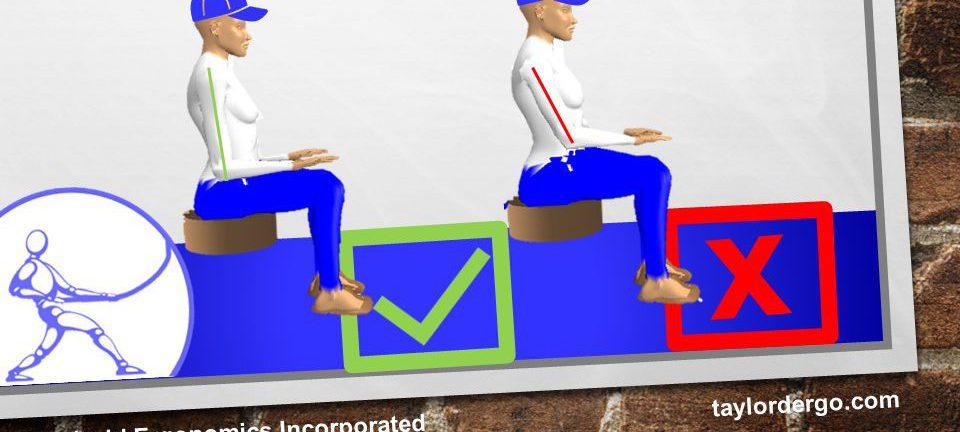Did you know that the placement of your keyboard and mouse can have a significant impact on your physical health and work performance? In industrial workplaces, the locations of conveyors, boxes, parts, and tools have similar effects. In this post, we’ll explore the importance of ergonomics and how even a small difference in reach or height can make a big difference.
In most areas of life, we aim for “close enough”, but I would argue that, in some areas of ergonomics, an inch can make all the difference. (For those of you who think or work in metric, a couple of centimeters makes a similar impact!) This concept applies in industrial environments, but since you are reading this on a screen, let’s apply it to the height and reach of the device you have your hands on.
Ideal working posture for computer work
Ideally, a keyboard and mouse should be positioned at elbow height, within reach when the upper arms are hanging loosely at the side of the body. The upper arms should rest against the side-seam of your shirt. The image at top left shows this “ideal” position.
If you keep your keyboard and mouse in this ideal position, the load on the shoulder muscles is minimized; in fact, when we model it, the demands are predicted as 10% of maximum strength. Most people could work in this position for about 4.5 hours total per day. When you rest your arms on the desk, mouse, or a wrist rest, you are giving your muscles “rest”, and extending your work tolerance.
If you must choose only one work position, this one, with the back upright and the arms close to the body, is probably the best work position we can hope for. (Ideally, we’d use a variety of work postures, but that’s a topic for another day.)
What happens if reach is increased by 1 inch (2.5 cm)?
I wanted to experiment with changing reach by only a small distance. If you move the keyboard and mouse 1” further away, the demand on the arms increases to 18% of maximum strength. Muscle fatigue research predicts that most people can maintain this effort for just under 3 hours per day. That’s quite a bit less than 4.5 hours!
What many people do, if the keyboard and mouse are too far away or too high, is push the devices even further away, to create space to rest the forearms on the desk. The entire body slumps forward over the desk, so the back is no longer in contact with the chair, and the neck is in an awkward posture, with the head thrust forward. A 1” forward reach might not lead to arm pain; it might trickle up to the neck and back.
If you raise the keyboard 1” higher than ideal, you can also create contact pressure at the wrist, right across the carpal tunnel. I won’t bore you with the injury mechanism for carpal tunnel syndrome, but you can imagine that pressure in this area should be avoided.
How does this apply in offices?
For those of you working in an office, I encourage you to figure out the ideal height of your keyboard and mouse, and to ensure that your desk will adjust to that height. Provide height-adjustable desks or keyboard trays and adjustable chairs. Make sure armrests do not prevent workers from pulling the chair close to the desk.
How does this apply in other work environments?
This principle applies to any work that is repetitive or prolonged. The effects of reach and non-optimized working height is even more pronounced where loads are handled. A worker who repetitively picks up parts, cuts meat, or pushes a box along a conveyor is acutely aware of tiny changes in height and reach. An ergonomist is trained to figure out how to modify the job to allow the worker to optimize working height and reach. We might recommend diverters, a modified table design, adjustability features, different tools, gravity fed racks, or something unique for your environment.
The moral of the story
If a worker needs to use muscles to work in a position that is even 1” from “ideal”, the muscles fatigue faster. Fatigue causes workers to change their working position, and ultimately leads to injuries, errors, or poor work performance. Give workers every opportunity to minimize reach and provide height-adjustability options.
Need help?
Contact us at info@taylordergo.com for information about ergonomics (risk) assessments or ergonomics design reviews for new equipment. Or inquire about having us come on-site to train your manufacturing engineers or Office JHSC.


